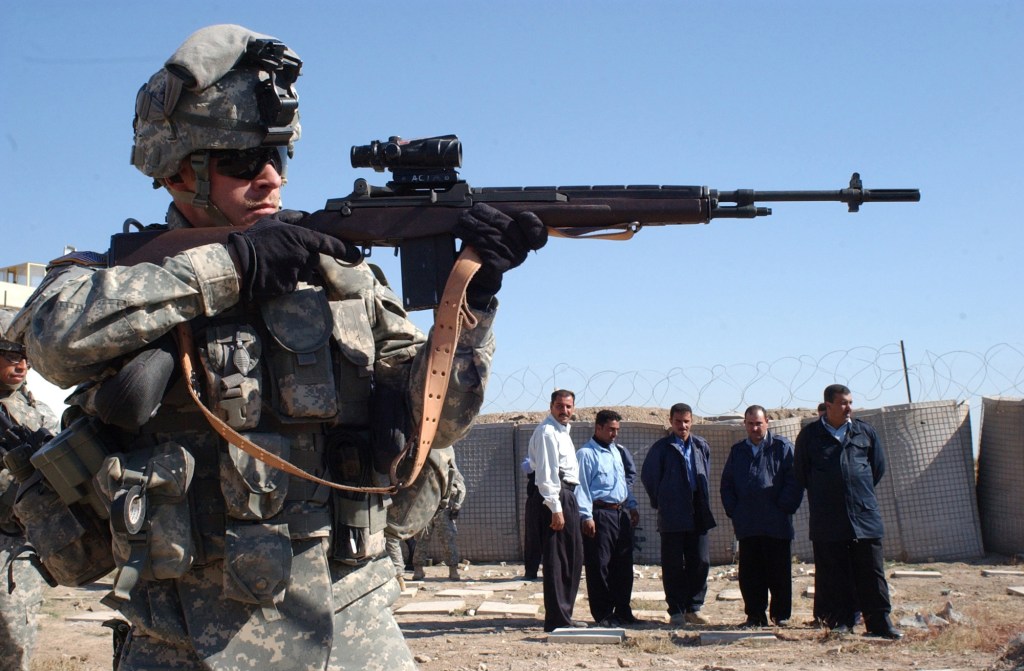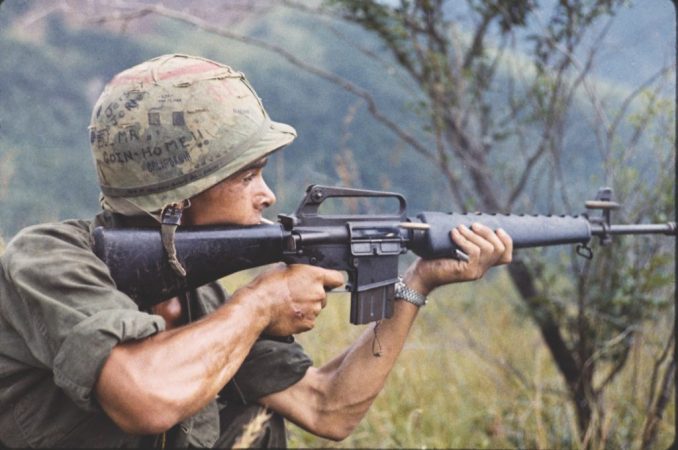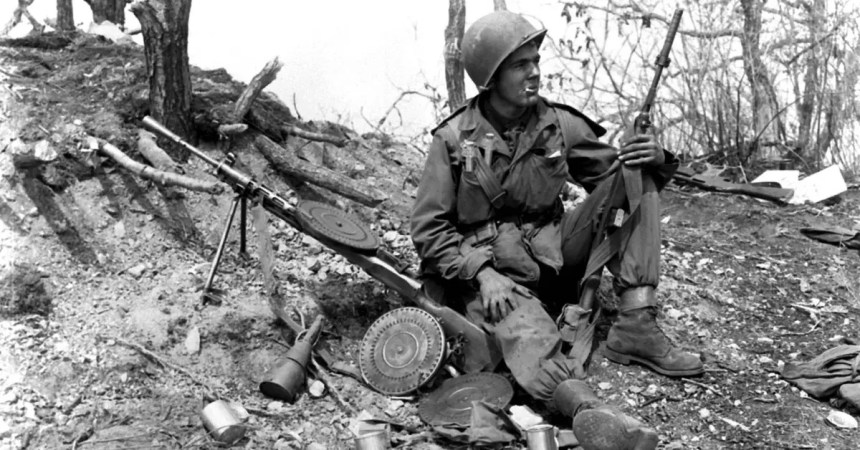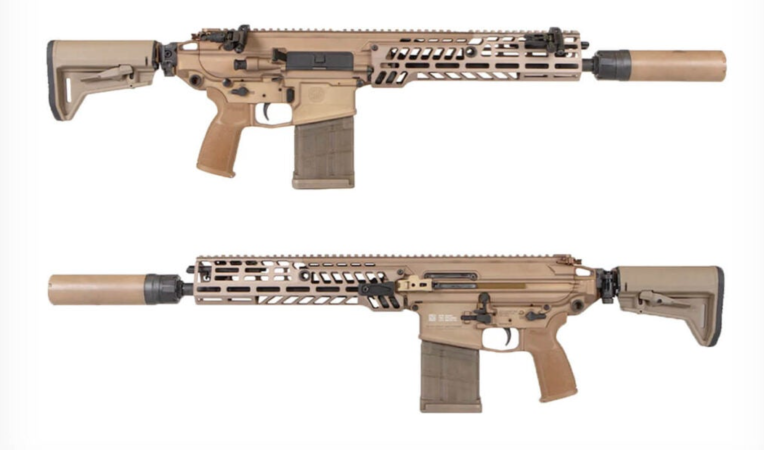The North Atlantic Treaty Organization is a military alliance that was founded after WWII to unite Western nations against the Soviet Union. To that end, NATO nations sought to standardize the cartridge of all of their infantry rifles. This would allow NATO members to support each other logistically in case war broke out. Moreover, most NATO nations agreed to standardize the same infantry rifle to further simplify logistics. The plan looked promising until the U.S. stepped in.

During WWII, Germany introduced the intermediate cartridge to the battlefield with the 7.92mm Kurz in the StG 44 assault rifle. Less powerful than a full-power rifle cartridge like the .30-06 used by the U.S., the intermediate cartridge allowed soldiers to carry more ammo and deliver a greater volume of fire while still being effective at the typical combat range of 300 meters. The Soviet Union developed its own intermediate cartridge, the 7.62x39mm, and assault rifle, the AK-47.

After WWII, Britain developed the intermediate .280 British cartridge and an assault rifle designated the EM-2. Belgian firearms manufacturer FN Herstal designed its new Fusil Automatique Léger, a light automatic rifle, to fire .280 British as an assault rifle. Whether in the EM-2 or FAL, .280 British had the potential to be NATO’s intermediate cartridge in response to the Warsaw Pact’s 7.62x39mm. However, the United States was not keen on adopting a foreign cartridge or weapon.

During the first half of the 20th century, the U.S. military’s weapons development and production were largely performed in-house. Research and design of America’s infantry rifles generally went through Army facilities like Springfield Armory and Rock Island Arsenal. Production could be outsourced, especially during wartime, but was performed under the direction and supervision of the Army. The Ordnance officers who oversaw these operations were staunch opponents to adopting .280 British in the EM-2 or the FAL.

In 1950, both the EM-2 and FAL were presented to the U.S. Army for consideration against a Springfield-developed rifle. After the test concluded, the Army suggested that FN rechamber the FAL in the U.S. .30 Light Rifle cartridge. Billed as an intermediate cartridge, .30 Light Rifle was still more powerful than Soviet 7.62x39mm or .280 British and very much a full-power rifle round. In 1951, with the British leaning towards adopting their native EM-2 over the FAL, FN agreed to chamber the FAL in .30 Light Rifle and even offered for the U.S. to produce the rifle royalty-free. However, this left two of NATO’s most influential nations with different rifles and cartridges.

In 1952, Britain and the U.S. made a compromise. The British accepted .30 Light Rifle as the NATO standard cartridge in exchange for the U.S. accepting the FAL as the NATO standard rifle. .30 Light Rifle was later standardized as 7.62x51mm NATO in 1954. However, the U.S. continued its own rifle trials and adopted the Springfield T44 rifle as the M14. A derivative of the M1 Garand, the M14 was billed as a replacement for the M3 Submachine Gun, M1918 BAR, M1 Carbine and M1 Garand. In reality, it was too heavy to replace the M3 or carbine and uncontrollable in automatic fire. While the FAL was adopted by most NATO countries and became known as “the right arm of the free world”, despite it being stuck with the overpowered 7.62mm NATO, the M14 is the shortest-serving infantry rifle in U.S. history.

In the early days of the Vietnam War, U.S. troops quickly learned that their M14s were inferior to the AKMs wielded by the communists. A modernized version of the AK-47, the AKM fired the intermediate 7.62x39mm cartridge from a 30-round magazine and could provide a greater volume of fire during the close-range jungle fighting in Vietnam. The heavy M14, with its full-power 7.62mm NATO cartridge and smaller 20-round magazine, prevented U.S. troops from achieving fire superiority. As a result, the M14 was quickly replaced by the M16 chambered in .223 Remington, a true intermediate cartridge. Following its adoption by the U.S., .223 was standardized as 5.56x45mm NATO in 1980 to replace 7.62mm NATO as the alliance’s standard infantry rifle cartridge.
Feature Image: U.S. Army










